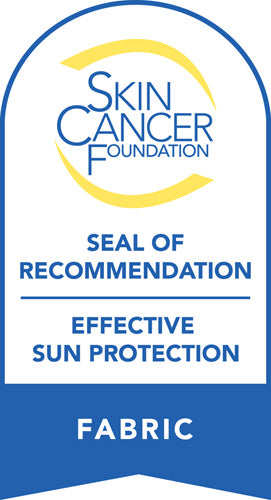Ways to Mitigate Melanoma: Signs, Treatment, and Proactive Prevention
Protecting your skin from the sun is one of the most important things you can do for your health. Melanoma, a serious type of skin cancer, can develop when your skin gets too much sun exposure.
Melanoma might sound scary, but knowing how to protect yourself can make a big difference. Whether you're at the beach, in your backyard, or just walking around town, taking care of your skin now can prevent problems later.
In this article, you'll learn all about melanoma risk factors and how to spot its early signs. You'll discover simple steps to prevent skin cancer and shield yourself from harmful UV rays. By the time you finish reading, you'll have the knowledge to take better care of your skin and enjoy the outdoors safely.
Melanoma Risk Factors
Melanoma starts in cells called melanocytes, which give your skin its color. While melanoma is typically less common than other skin cancers, it can be more dangerous when caught too late.
There are different types of melanoma. The most common one grows on the surface of your skin, often in areas that get a lot of sun. But melanoma can also form in places you might not expect, like under your nails or even in your eyes.
Your risk of getting melanoma depends on several factors. Some you can't control, like your family history or the color of your skin. If someone in your family has had melanoma, or if you have fair skin that burns easily, you might be at higher risk.
Other risk factors are things you can control. The biggest one is how much time you spend in the sun without protection. Getting sunburned, especially when you're young, can increase your chances of melanoma later in life.
Having lots of moles or unusual moles can also raise your risk. These moles might be bigger than normal, have odd shapes, or be different colors. It's important to keep an eye on your moles and notice any changes.
Your age matters too. As you get older, your risk of melanoma goes up. But young people can get it too, so it's never too early to start protecting your skin.
Signs and Symptoms of Melanoma
Knowing what to look for on your skin can help you catch melanoma early. The ABCDE rule is an easy way to remember the main signs of skin cancer:
- Asymmetry: If you draw a line through a mole, the two halves don't match
- Border: The edges are uneven, ragged, or blurry
- Color: The mole has different colors or shades instead of being all one color
- Diameter: The spot is larger than a pencil eraser (about 6 millimeters)
- Evolving: The mole changes in size, shape, or color over time
But there are other things to watch for too. A mole might be a problem if it:
- Looks different from your other moles
- Feels itchy or tender
- Bleeds or oozes
- Has a crusty surface
- Appears as a new dark spot on your skin
Don't forget to check all of your skin, not just the parts that get sun. Melanoma can show up anywhere, even on areas that don't see much sunlight. This includes your scalp, between your toes, and under your nails.
It's a good idea to check your skin once a month. Stand in front of a mirror and look at every part of your body. Use a hand mirror to see hard-to-reach places. If you notice anything unusual, it's best to show your doctor. They can tell you if there's anything to worry about.
Melanoma Early Detection and Diagnosis
Catching melanoma early can make a big difference in how well treatment works. Regular check-ups with a skin doctor (dermatologist) are super important. These doctors are experts at spotting skin problems.
They can see things you might miss during your own skin checks. Try to see a dermatologist once a year for a full-body skin exam.
If your doctor sees something suspicious, they might do a skin biopsy. This means they'll take a small piece of the skin to look at under a microscope. Typically they'll numb the area first, so it won't hurt much. The biopsy can tell for sure if it's melanoma or not.
If melanoma is found, your doctor might order more tests to see if it has spread. These could include:
- Blood tests
- Imaging tests like X-rays, CT scans, or MRI scans
- Lymph node biopsy, if they think the melanoma might have spread to nearby lymph nodes
Remember, you play a big role in early detection too. If you notice any changes in your skin between doctor visits, don't wait - make an appointment right away. It's always better to be safe and get things checked out.
Early detection gives you the best chance of beating melanoma. So stay on top of your skin checks and doctor visits. Your future self will thank you for being proactive about your skin health.
Treatment Options for Melanoma
If you're diagnosed with melanoma, your doctor will work with you to create a treatment plan. The approach depends on how serious your melanoma is, but there are several effective options available.
For many people, surgery is the first step. A doctor will remove the melanoma and some healthy skin around it. If caught early, this might be all the treatment you need. However, if the melanoma has spread, your doctor might recommend additional treatments:
Immunotherapy
One option is immunotherapy, which boosts your body's natural defenses to fight the cancer. Another is targeted therapy, which attacks specific gene changes in some melanomas. Both of these treatments can be very effective and may be given as pills or through an IV.
Radiation and Chemotherapy
In some cases, your doctor might suggest radiation therapy. This treatment uses strong energy beams to kill cancer cells. It's often used when surgery isn't possible or if the melanoma has spread to other parts of your body.
While not as common as it once was, chemotherapy is still an option for some people. This treatment uses powerful medicines to attack cancer cells throughout your body.
Treatment Combination Approach
Your treatment plan might include just one of these options or a combination. Your doctor will explain which treatments are best for you and why. They'll also help you understand what to expect during treatment.
It's important to know that melanoma treatment has improved a lot in recent years. New therapies are helping people live longer and feel better. So if you're facing melanoma treatment, you have more options than ever before.
Don't hesitate to ask your doctor questions about your treatment. Understanding what's happening can help you feel more in control. And always let your doctor know if you're having any side effects. There are often ways to manage them and make you more comfortable during your treatment journey.
Proactive Protection Strategies
Make shade your friend. When you're outside, especially between 10 AM and 4 PM, try to stay in shaded areas. This is when the sun's rays are strongest.
Use sunscreen the right way. Apply a broad-spectrum sunscreen with at least SPF 30 to all exposed skin. Put it on 15-30 minutes before going outside, and reapply every two hours or after swimming or sweating. Don't skimp, use enough to fill a shot glass to cover your whole body.
Be extra careful around water, snow, and sand. These surfaces can reflect the sun's rays and increase your chance of sunburn. Even on cloudy days, up to 80% of the sun's UV rays can reach your skin, so don't let your guard down.
Avoid tanning beds. They can increase your risk of melanoma by 45%. If you want a tan, consider using a self-tanning product instead. Just remember, these products don't protect you from the sun, so you'll still need to use sunscreen.
Protect your kids. Children's skin is extra sensitive to the sun. Keep babies under 6 months out of direct sunlight. For older kids, make sun protection a fun habit by letting them pick out their own sun-protective gear.
Check your medications. Some medicines can make your skin more sensitive to the sun. Ask your doctor or pharmacist if any of your medications might increase your risk of sunburn. By making these strategies part of your daily routine, you're taking a big step in preventing melanoma.
UV Protection Through Clothing
Your clothes can be your best defense against harmful UV rays. Special sun-protective clothing offers an easy and effective way to shield your skin.
UPF ratings tell you how well a piece of clothing blocks UV rays. The higher the UPF number, the better the protection. Look for clothes with a UPF of 50+, which block 98% or more of UV rays.
BloqUV's tops, bottoms, and dresses are designed to keep you safe in the sun. Our Long Sleeve Crew Neck T-Shirt is perfect for outdoor activities, giving you full arm coverage with a UPF 50+ rating.
Color matters too. Darker colors generally block more UV rays than light ones. A navy blue shirt from BloqUV, like our Short Sleeve Crew, might offer more protection than a white one.
The fabric type is important as well. Synthetic materials like polyester and nylon often block more UV rays than natural fibers. BloqUV's Compression leggings are made with a special blend that offers excellent sun protection for your legs.
Fit is another factor to consider. Loose-fitting clothes can be more protective because they're less likely to stretch, which can reduce UV blocking. The BloqUV Sun Protective Hoodie is a great example of a loose, comfortable fit that offers full coverage.
Remember, even with sun-protective clothing, you should still use sunscreen on exposed skin. Combine your UPF clothing with other sun safety habits for the best protection.
By choosing the right sun-protective clothing, you can enjoy outdoor activities while keeping your skin safe from harmful UV rays. It's an easy way to add an extra layer of defense against sun damage.
Lifestyle Factors That Help Prevent Skin Cancer
Your daily habits play a big role in protecting your skin from melanoma. By making some simple changes, you can boost your body's natural defenses against skin damage.
A colorful diet rich in fruits and vegetables is a great place to start. These foods are packed with antioxidants that help your skin fight off sun damage. Try to include a variety of colors on your plate at each meal, like deep red berries, dark green leafy vegetables, and bright orange carrots.
Staying hydrated is another key factor. Water helps keep your skin healthy and may make it less likely to burn. Aim to drink plenty of water throughout the day, especially if you're active or spending time in the sun.
Regular exercise is also important for skin health. When you get moving, you boost your overall health, including your skin's ability to repair itself. Just 30 minutes of activity most days can make a difference. If you're exercising outdoors, remember to protect your skin from the sun.
Managing stress and getting enough sleep is crucial for skin health too. High stress levels can weaken your immune system, while good sleep gives your skin time to repair itself. Try to find ways to relax and aim for 7-9 hours of sleep each night.
Some habits, like smoking and drinking too much alcohol, can make your skin more vulnerable to damage. If you smoke, quitting is one of the best things you can do for your skin. If you choose to drink alcohol, do so in moderation.
Sunshine and Safety go Hand in Hand
Every step you take to protect your skin from melanoma matters. Whether it's putting on sunscreen, wearing a hat, or choosing the right clothes, you're making a smart choice for your health.
BloqUV offers a great collection of sun-protective gear that can help keep you safe while you enjoy the outdoors. Our clothing blocks 98% of harmful UV rays, so you can enjoy your favorite outdoor activities without worry. Whether you love tennis, golf, running, or just hanging out at the beach, BloqUV has something for you.
Don't let fear of the sun keep you inside. Browse our collection to find the perfect pieces to keep you protected.



